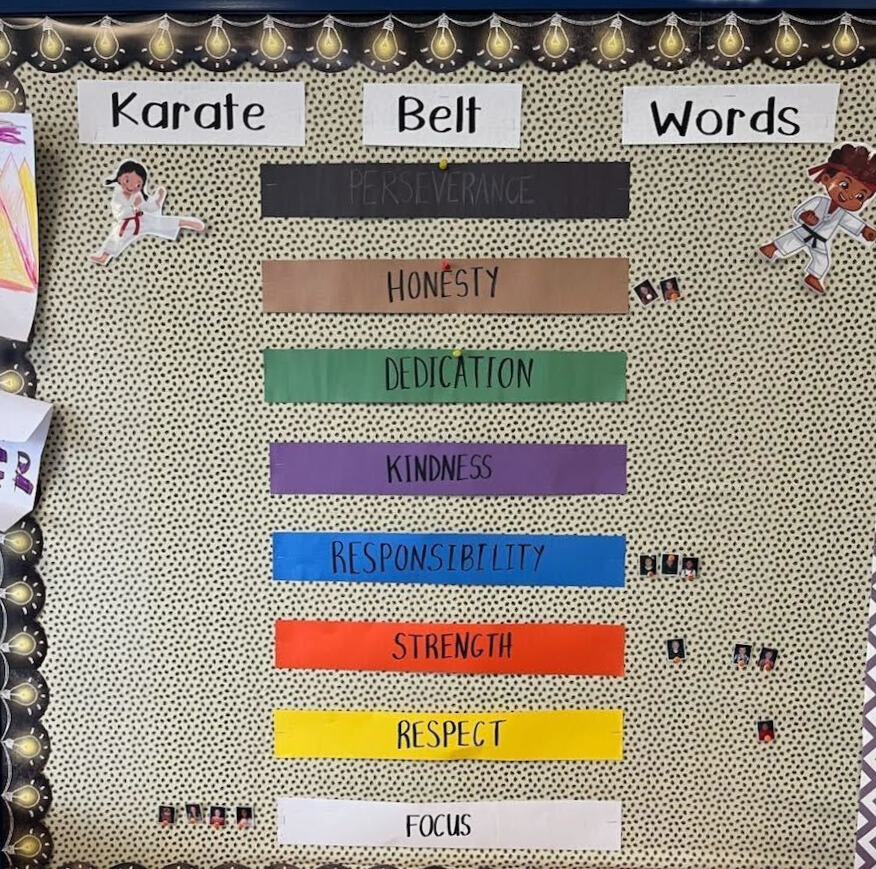Sarah Stitt, Partnership Consultant
Sometimes the most powerful teaching ideas don’t come from a textbook, but from the creativity and passion of fellow educators. When helping students master sight words, we know memorization doesn’t cut it. Students need engaging, repeated exposure and opportunities to map these words orthographically. Thankfully, teachers are finding innovative, fun ways to make that happen. Here are three real-world strategies that are making a difference in classrooms.
1. The MCW Karate Wall: Motivation Through Movement
Shared by Brittany Dingman, Midlakes, NY
Brittany noticed her students were struggling to retain their sight words. She wanted a strategy that was fun and a structure that involved families. Her solution? The MCW Karate Challenge.
Students move through colored “belts” by demonstrating automaticity with high-frequency word lists. Each belt level requires fluency in reading and, eventually, spelling. Students practice at home, at school, and even on the bus. They love physically moving their photos up the belt chart, and Brittany tracks their progress with a simple recording sheet. The reward for mastering all words? Lunch in the classroom and a new challenge to spell the words.
“It’s been so rewarding to see how motivated and excited my students are to learn and move up a level!”

2. Post-It Practice: Building Exposure in Transitions
Shared by Annie Gerst, Somerset, KY
Sometimes, the simplest tools make the biggest impact. Annie shared that during a recent coaching session, the teacher she was observing used sticky notes to give her students quick-hit sight word practice throughout the day. After explicitly teaching and mapping a word, she places it on a Post-it-Note near the door.
On the way out to recess or lunch, students say the word aloud as a greeting or goodbye—”Hello, of!” “Bye, have!” It’s a fun, low-pressure way to increase exposure and reinforce mastery, all during transition times that would otherwise go unused.
3. Quick Practice Sheets: Reinforcing What’s Explicitly Taught
Shared by Courtney Pollack, Council Rock, PA
Courtney looks for ways to build on what’s taught explicitly. She uses simple practice sheets—like this one—so students have daily opportunities to engage with high-frequency words. After introducing each word, students practice reading and writing it with clear, targeted activities like using the word in a sentence, tapping out the sounds, writing the letters, spelling the word, and identifying irregular parts.
This type of sheet can be placed in an independent literacy station, allowing students to reinforce skills after direct instruction. Structured repetition supports orthographic mapping and helps students build fluency and confidence!
Big Impact from Simple Shifts
Whether it’s a karate-themed challenge, a sticky-note ritual, or quick paper-and-pencil practice, these teachers prove that small, intentional strategies can lead to big results.
The power of these strategies goes beyond creativity. It shows up in the data. Monitoring reading progress is not about charts or checklists. It is about what those numbers reveal—the story of each student’s growth.
If you are looking to boost outcomes across your K–3 classrooms, especially for students facing dyslexia or learning English as a second language, these tips are just the beginning.
Download our free Six Strategies eBook to get practical, research-backed ideas that can help every student succeed.

